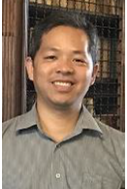Distinguished Lecturer List
Dr. Abdulmotaleb El Saddik, University of Ottawa
Dr. Volker Ziegler, Nokia
Dr. Salvador Venegas-Andraca, Tecnologico de Monterrey
Dr. Jong-Moon Chung, Yonsei University
Dr. Ken Sakamura, Toyo University
Dr.Jianlong Fu, Microsoft Research Asia (MSRA)
Professor Abdulmotaleb El Saddik, Phd
University of Ottawa
Canada, R7
Bio
Abdulmotaleb El Saddik, a Distinguished Professor, is an internationally recognized scholar who has made seminal contributions to the knowledge and understanding of multimedia computing, communications, and applications. His visionary work looks toward the establishment of Digital Twins using AI, Haptics, AR/VR, and 5G that allow people to interact in real-time with one another as well as with their digital representation in the Metaverse.
He has been extremely productive in high-quality research and impact. He is the Editor-in-Chief of the ACM Transactions on Multimedia Computing, Communications and Applications (ACM TOMM), a Senior Associate Editor of IEEE Consumer Electronics Magazine, and a Guest Editor for several IEEE Transactions and Journals. He has authored and co-authored ten books and more than 600 peer-reviewed articles and five patents and chaired more than 50 conferences and workshops. He has received research grants and contracts totaling more than $20 million and has supervised more than 120 researchers. He is the author of the book 'Haptics Technologies: Bringing Touch to Multimedia.'
Dr. El Saddik is a Fellow of the Royal Society of Canada, IEEE, the Canadian Academy of Engineering, and the Engineering Institute of Canada. He has received several awards, including the Friedrich Wilhelm Bessel Award from the German Humboldt Foundation and the IEEE Instrumentation and Measurement Society Technical Achievement Award. He also received the IEEE Canada C.C. Gotlieb (Computer) Medal and A.G.L. McNaughton Gold Medal for his significant contributions to the field of computer engineering and science.
Topics
The Metaverse Unleashed: Technical Requirements and Opportunities The metaverse is a virtual world that is interconnected and persistent, and it is rapidly gaining popularity. It has the potential to revolutionize the way we interact with each other and with the world around us. This tutorial will provide an overview of the metaverse, including its technical requirements and platforms. We will discuss the key technologies that enable the metaverse, such as virtual reality, augmented reality, web3, and artificial intelligence. We will also discuss the different platforms that are available for accessing the metaverse, such as Roblox, Meta Horizon, Mozilla Hubs etc. This tutorial is intended for students and technical professionals as well as decisions makers who are interested in learning more about the metaverse. No prior knowledge of the metaverse is required. Digital Twins: The Future of Smart Cities and Beyond.
This talk examines the impact of video foundation models on consumer content consumption. It highlights how big AI models have revolutionized video applications, allowing users Imagine having a virtual replica of yourself or your city that assists you in making smarter decisions. This is the essence of digital twins: digital duplicates of physical entities used to monitor, comprehend, and optimize their real-world performance. Digital twins harness the power of cutting-edge technologies like artificial intelligence (AI), the Internet of Things (IoT), big data, and 5G. These technologies enable digital twins to gather real-world data in real time and provide valuable insights for enhancing the performance of their physical counterparts. Across various industries, from manufacturing and healthcare to transportation, digital twins are already making a significant impact. For instance, they predict when machines require maintenance, aid in early disease diagnosis, and optimize traffic flow. As digital twin technology continues to advance and become more accessible, it is poised to play an even more significant role in our lives. In this two-hour tutorial, we will delve into the world of digital twins, explore their applications, and discuss how they are reshaping our quality of life.
Haptics: The Power of Touch in the Digital Age
This talk highlights the impact of fine-grained image analysis on consumer applications, going beyond simple classification to enable detailed analysis. It showcases how this Imagine being able to relive the warmth of a hug, the texture of a loved one's hand, or the sensation of a cherished moment shared with someone who's no longer with us. Memories are precious, and technology has enabled us to capture and revisit them through photographs, audio recordings, and videos. But what if we could go beyond sight and sound and rekindle the touch and feel of those memories? Introducing 'Haptic as a New Media,' a pioneering exploration into the world of haptics—the science of touch and tactile feedback—as a revolutionary means of preserving and reliving our most cherished memories. Join us on a journey through the evolution of multimedia technology and its transformation into a medium that extends to the realm of touch and physical sensations. In this captivating tutorial, we delve into the concept of multimedia haptics—a fusion of haptic and other media—in the context of telepresence, tele-learning, healthcare, gaming, and more. We'll uncover the potential of haptics as a transformative force in telemedicine, teleoperation in hazardous environments, industrial design, and interactive virtual reality applications. Our discussion will encompass a comprehensive overview of haptics from a different perspectives, addressing key research challenges and opportunities in this dynamic field. Whether you're a researcher, professional, or simply curious about the cutting-edge intersection of technology and human experience, this tutorial offers insights and inspiration into the exciting world of haptics.
Dr. Volker Ziegler
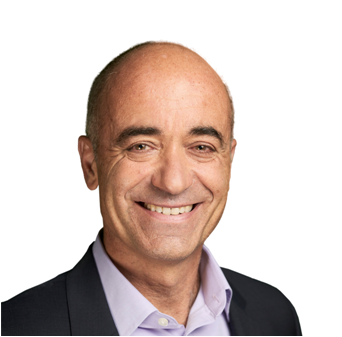
Senior Advisor & Chief Architect, Nokia
Germany, R8
Bio
Dr. Volker Ziegler is a purpose-driven, energetic and strategic leader with 25+ years of broad and international experience in the telecommunications industry. He currently serves as Senior Advisor and Chief Architect in Nokia Strategy and Technology unit. Previously, Volker has exercised a leadership role with Nokia Bell Labs in 6G research and ecosystem. Prior to this, he has served as Head of 5G Leadership and Chief Architect of Nokia Mobile Networks.
Topics
Future ready networks and path to 6G
The world of the 2030s will be shaped by socio-economic, technology and user need trends. These trends will drive requirements for the networks of the future and foster the creation of new multi-party ecosystems. In this talk, a concise vision of the opportunities framed by the concepts of digital-physical fusion and human augmentation will be presented. The associated technology enablers will help unlock a myriad of new opportunity for consumer, enterprise and industry alike. Next generation networks and their advanced capabilities will be key to realize these opportunities. On the path to 6G, 5G advanced will boost experience, operability and usage of novel services. AI/ML technologies will help improve operability as well as radio access network energy efficiency. To bring the metaverse future to life fully, novel 6G technologies will be needed. Key 6G technologies will be presented including new spectrum technologies, AI-native air interface, extreme connectivity, network-as-a-sensor, security, privacy and trust as well as elements of architectural transformation.
Towards a 6G system architecture – drivers and options
Future networks will enable cognitive and automated ecosystems capable of addressing the transformative needs and operating models of industries and consumers alike. Network architecture will be at the heart of this dynamic transformation. In this talk, an overview of the end-to-end 6G system architecture will be provided. Network design principles such as AI- and Cloud-nativeness, flexibility and programmability, automation and simplification will provide the guardrails to help identify and assess options of 6G architectural innovation. Options of architectural innovation will be presented including single standalone system architecture for 6G which holds special promise to simplify and increase deployment efficiency. The option of Servies Based Interface between Radio Access Network and Core along with distributed Non Access Stratum would help unlock the full benefit of Service Based Architecture principles. Local area performance can be enhanced and optimized by flat architecture and simplified user plane. Network slicing and Quality of Service framework evolution will be foundational for digital transformation and innovation. Specialized and local sub-networks will provide extreme connectivity whereby the end-point is the critical sub-network to serve specific requirements. Last but not least, migration and deployment considerations as driven by 6G system architecture must not come as an afterthought.
Professor Salvador Venegas-Andraca, PhD
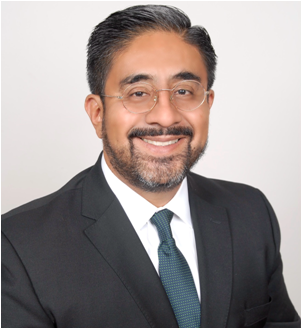
Dr. Salvador Venegas-Andraca, Professor,
Tecnologico de Monterrey Campus Santa Fe.
Mexico. R9
Bio
Dr. Salvador Venegas-Andraca is a professor of Computer Science and the head of the Computer Science Department at de Monterrey Campus Santa Fe. Salvador is the head of the Quantum Information Processing group at Tecnologico de Monterrey and he is also the founder and Principal Investigator of the Unconventional Computing Lab. Salvador holds a DPhil in Physics (2006) and an MSc by research in Computer Vision (2002), both degrees awarded by the University of Oxford, as well as an MBA (Hon) and a BSc (Hon) in Digital Electronics and Computer Science, these two last degrees awarded by < Tecnológico de Monterrey. Salvador has been a visiting professor at Harvard University, the National Autonomous University of Mexico, del Valle University (Colombia), Sergio problems. Salvador is the author of Quantum Walks for Computer Scientists (2008), the first book ever written on the scientific field of quantum walks, and the co-author of "Quantum Image Processing" (Springer, 2020), the first book ever written fully focused on storing, processing and retrieving visual information using quantum mechanical systems. He has published more than 50 scientific papers with more than 1,600 citations in Web of Science and is currently an Associate Editor of the Quantum Information Processing journal (Springer) as well as a member of the Quantum Computing Network of the World Economic Forum. Salvador is a strong supporter of the application of science and technology on the creation of wealth. Thus, he has worked as a consultant for government as well as small and medium size companies since 1993. Professor Venegas-Andraca’s activities in this area include non-published (i.e. confidential) research developed for those companies he has worked for. Salvador has supervised several undergraduate (BSc) and graduate (MSc, PhD) students. Salvador has delivered talks, keynote talks, seminars, tutorials and other courses in Argentina, Canada, Colombia, Egypt, Germany, Japan, Mexico, Peru, the United Kingdom, The United States of America, and the United Arab Emirates. He has also co-organized conferences, workshops and tutorials in Mexico, The United Kingdom, and The United States of America. Salvador has received several awards for his scientific achievements, among them: fellow of the Mexican Academy of Sciences, Senior Member of the Association for Computing Machinery, fellow of the Mexican Academy of Computer Science, member of the Mexican Society for the Public Communication of Science, Level 2 (physics and mathematics) at Mexico’s National Network of Researchers (SNI), Oxford University Chancellor Fund’s Award and Silver Medal at the British Council International Students Awards.
Topics
Quantum Computing: An introduction to Quantum Computing.
Quantum Cryptography: An introduction to Quantum Cryptography for software developers (Software Guru is a Mexican company focused on continuous high-level training for software developers) Quantum Computing & Shaping our Future – Trending in Information Technology
Professor Jong-Moon Chung, PhD
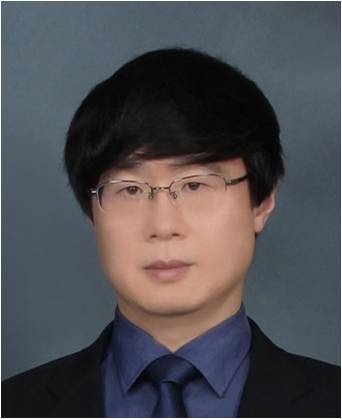
Yonsei University, Professor
South Korea, R10
Bio
Dr. Jong-Moon Chung received his B.S. and M.S. degrees in electronic engineering from Yonsei University in 1992 and 1994, respectively, and Ph.D. degree in electrical engineering from the Pennsylvania State University in 1999. Since 2005, he has been a professor in the School of Electrical and Electronic Engineering, Yonsei University, Seoul, Republic of Korea (ROK). From 1997 to 1999, he served as an assistant professor and instructor in the Department of Electrical Engineering, Pennsylvania State University. From 2000 to 2005, he was with the School of Electrical and Computer Engineering, Oklahoma State University (OSU) as a tenured associate professor and director of the OCLNB and ACSEL labs. His research is in the area of smartphone design, network scheduler design, M2M, IoT, AR, CR, SDN, NFV, MANET, VANET, WSN, satellite & mobile communications, and broadband QoS networking. In 2012 he received the ROK Defense Acquisition Program Administration (DAPA) Director’s Award, in 2008 he received the Outstanding Accomplishment Professor Award from Yonsei University. As an associate professor at OSU, in October 2005 he received the Regents Distinguished Research Award and in September the same year he received the Halliburton Outstanding Young Faculty Award. In 2004 and 2003, respectively, he received the Technology Innovator Award and the Distinguished Faculty Award, both from OSU, and in 2000 he received the First Place Outstanding Paper Award at the IEEE EIT 2000 conference. He is a senior member of the IEEE, member of the IET and IEICE, and life member of the HKN, KIIS, IEIE, and KICS. He has served as the General Co-Chair of IEEE MWSCAS 2011, Local Chair and TPC Co-Chair of IEEE VNC 2012, and Local Chair of IEEE WF-IoT 2014. He is also an Editor of the IEEE Transactions on Vehicular Technology and Co-Editor-in-Chief of the KSII Transactions on Internet and Information Systems (TIIS).
Topics
XR (eXtended Reality) Technology
The eXtended Reality (XR) technologies introduced include mixed reality (MR), augmented reality (AR), virtual reality (VR), haptic and 3D-motion user interfaces (UIs), as well as head mounted displays (HMDs). In addition, artificial intelligence (AI) technologies that are used in advanced XR multimedia services are discussed and an overview of H.264 Advanced Video Coding (AVC), H.265 High Efficiency Video Coding (HEVC), H.266 Versatile Video Coding (VVC), and Moving Picture Experts Group – Dynamic Adaptive Streaming over HTTP (MPEG-DASH)-based adaptable video streaming technology is provided. More details can be found in Dr. Chung's book titled "Emerging Metaverse XR and Video Multimedia Technologies" published by Apress, Springer Nature publisher (c)2023 (https://link.springer.com/book/10.1007/978-1-4842-8928-0?sap-outbound-id=43DA42FA2595556B1B6E17F2853F93797D953575), and his Coursera course (https://www.coursera.org/learn/ar-technologies-video-streaming) "AR & Video Streaming Services Emerging Technologies" (https://youtu.be/-92CaV_x9DM). Dr. Chung's 6 courses in Coursera (on topics of deep learning, big data, AR/XR, multimedia streaming, MPEG-DASH, cloud/edge computing, smartphones/smartwatches, 4G, 5G, Wi-Fi, Bluetooth, TCP/IP, Internet, security, and IoT technologies) have been used by approximately 2 million users and were listed among the top 33 industry recommended courses.
5G & 6G Mobile Communication & V2X Vehicle Networking
6G mobile communication technologies introduced include the 5G and 4G LTE network architecture and their functional systems, as well as the expected features of future 6G mobile communication networks, which includes use of mmWaves as well as LEO satellites and drones/UAVs as mobile base stations. In addition, V2X vehicle networking based on 5G and 4G LTE technologies and applications such as autonomous driving and platooning are described. The introduced content is based on numerous smartphone technologies developed for Samsung, LG, and Google, and electrical-vehicle (EV) technologies developed for Hyundai Motors. More details can be found in Dr. Chung's papers on 5G & 6G mobile communications and V2X vehicle networking (https://cnl.yonsei.ac.kren-US/professor/publication) and his Coursera course (https//www.coursera.or/learn/smart-device-mobile-emerging-technologies) "Smart Device & Mobile Emerging Technologies" (https:youtu.been-US/FUgxw3gc6A8).
Professor Ken Sakamura, PhD
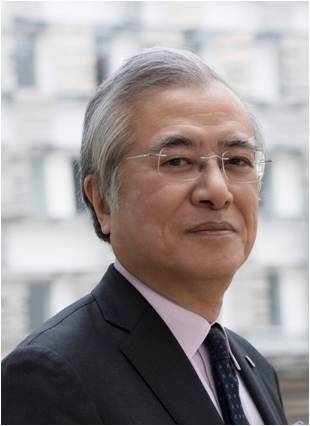
Toyko University, Professor
Japan, R10
Bio
Ken Sakamuraso was born in Tokyo in 1951, he is currently the Dean of the Faculty, INIAD, Toyo University/Emeritus Professor, The University of Tokyo/CEO of the YRP Ubiquitous Networking Laboratory. He has been the leader of TRON Project since 1984, and has designed the TRON open computer system architecture which will be useful for the IoT. Today, µT-Kernel, a version of TRON real-time OS has been now adopted as IEEE standard. The OS family based on the TRON specification has been used globally in many consumer electronics and other products and is the best fit for lightweight IoT edge nodes. IEEE has recognized TRON Real-time OS family as IEEE Milestone, a distinction reserved for a significant technical achievement that occurred at least twenty-five years ago in an area of technology represented by IEEE having at least regional impact. He won many awards: the Medal with Purple Ribbon from Japanese government in 2003, Japan Academy Prize in 2006, and ITU150 Award in 2015.
Topics
Generative AI and Embedded Development:
An introduction to Quantum Computing. This talk will explore the impact of generative AI on embedded development, with a focus on our work in the TRON project. The abstract will discuss the shifts in embedded development paradigms and our research and development efforts in response to these changes.
IOWN and Embedded Systems:
In this presentation, I will discuss the transformation of embedded architecture with the widespread adoption of the all-photonics network, IOWN. It will cover the anticipated changes in embedded system designs and our R&D initiatives within the TRON project to address these emerging challenges.
Topics
XR (eXtended Reality) Technology
The eXtended Reality (XR) technologies introduced include mixed reality (MR), augmented reality (AR), virtual reality (VR), haptic and 3D-motion user interfaces (UIs), as well as head mounted displays (HMDs). In addition, artificial intelligence (AI) technologies that are used in advanced XR multimedia services are discussed and an overview of H.264 Advanced Video Coding (AVC), H.265 High Efficiency Video Coding (HEVC), H.266 Versatile Video Coding (VVC), and Moving Picture Experts Group – Dynamic Adaptive Streaming over HTTP (MPEG-DASH)-based adaptable video streaming technology is provided. More details can be found in Dr. Chung's book titled "Emerging Metaverse XR and Video Multimedia Technologies" published by Apress, Springer Nature publisher (c)2023 (https://link.springer.com/book/10.1007/978-1-4842-8928-0?sap-outbound-id=43DA42FA2595556B1B6E17F2853F93797D953575), and his Coursera course (https://www.coursera.org/learn/ar-technologies-video-streaming) "AR & Video Streaming Services Emerging Technologies" (https://youtu.be/-92CaV_x9DM). Dr. Chung's 6 courses in Coursera (on topics of deep learning, big data, AR/XR, multimedia streaming, MPEG-DASH, cloud/edge computing, smartphones/smartwatches, 4G, 5G, Wi-Fi, Bluetooth, TCP/IP, Internet, security, and IoT technologies) have been used by approximately 2 million users and were listed among the top 33 industry recommended courses.
5G & 6G Mobile Communication & V2X Vehicle Networking
The 5G & 6G mobile communication technologies introduced include the 5G and 4G LTE network architecture and their functional systems, as well as the expected features of future 6G mobile communication networks, which includes use of mmWaves as well as LEO satellites and drones/UAVs as mobile base stations. In addition, V2X vehicle networking based on 5G and 4G LTE technologies and applications such as autonomous driving and platooning are described. The introduced content is based on numerous smartphone technologies developed for Samsung, LG, and Google, and electrical-vehicle (EV) technologies developed for Hyundai Motors. More details can be found in Dr. Chung's papers on 5G & 6G mobile communications and V2X vehicle networking (https://cnl.yonsei.ac.kr/professor/publication) and his Coursera course (https://www.coursera.org/learn/smart-device-mobile-emerging-technologies) "Smart Device & Mobile Emerging Technologies" (https://youtu.be/FUgxw3gc6A8).
Dr. Jianlong Fu

Microsoft Research Asia (MSRA), China
Principal Research Manager
South China, R10
Bio
Dr. Jianlong Fu is currently a Principal Research Manager who is responsible for the research and innovation in multimodal computing group at Microsoft Research Asia (MSRA). He received his Ph.D. degree from the Institute of Automation, Chinese Academy of Sciences. His research focuses on multimedia content understanding, and multi-modal perceptual computing in images, videos, and embodied agents. He has published over 100 peer-reviewed technical papers and over 20 US patents. His Google Scholar h-index is currently 50. Dr. Fu serves as the vice-chair for the Automotive CE Applications Technical Committee under the IEEE Consumer Technology Society, as well as an editorial board member for IEEE TMM, IEEE CTSoc-NCT, and guest editor for IEEE TPAMI from 2019-2021. He has also chaired several specialized committees at international multimedia flagship conferences such as ACM Multimedia 2021 and ACM ICMR 2021/2023. He has received multiple awards, including the ACM SIGMM Rising Star Award 2022, Best Paper Award at the 2018 ACM Multimedia Conference, and over 10 international competition championships in CVPR/ICCV/ECCV. Additionally, his research has been applied to various Microsoft products such as Windows, Office, Bing, Edge, and Xioice.
Topics
Generative AI for Consumer Content Creation
Generative artificial intelligence (AI) has unleashed a new wave of possibilities in various domains, and one area that has experienced significant advancements is consumer content creation in image and video domains. This talk delves into the burgeoning field of generative AI and its profound impact on empowering consumers to create compelling and personalized visual content effortlessly. The talk commences by providing an overview of generative AI, focusing specifically on its application to images and videos. It explores state-of-the-art models such as generative adversarial networks (GANs), variational autoencoders (VAEs), and diffusion-based models, which can generate realistic and visually appealing content based on user inputs. These models have revolutionized the creative process, enabling consumers to produce stunning visuals that align with their artistic vision. Furthermore, the talk delves into the practical applications of generative AI for consumer content creation in the realm of images and videos. It shows how individuals can leverage generative AI to generate custom designs, artistic filters, video effects, and edit an image such as object removal. With the aid of generative AI, consumers can unleash their creativity, save time, and produce visually striking content that resonates with their audience. Video Foundation Models for Consumer Content Consumption This talk examines the impact of video foundation models on consumer content consumption. It highlights how big AI models have revolutionized video applications, allowing users to discover, navigate, and enjoy video content like never before. The talk provides an overview of video foundation models, emphasizing their ability to understand the visual and semantic aspects of videos. Advanced models like 3D CNNs and visual Transformers enable accurate video retrieval and recommendation. These models excel in video retrieval, delivering precise and contextually relevant results based on search queries. They also facilitate efficient video browsing through summarization, generating thumbnails, highlighting key moments, and providing concise summaries. This improves browsing experience and saves users' time. Furthermore, the talk explores how big AI foundation models enhance the video watching experience by extracting rich metadata through real-time video analysis. This includes scene recognition, object detection, and sentiment analysis, enabling advanced video recommendations, personalized content suggestions, and improved user engagement. The talk emphasizes the multifaceted applications of video foundation models, meeting the growing demand for efficient video retrieval, browsing, and watching experiences in today's video-centric landscape.
Fine-grained Image Analysis for Consumer Applications
This talk highlights the impact of fine-grained image analysis on consumer applications, going beyond simple classification to enable detailed analysis. It showcases how this analysis revolutionizes consumer experiences, beginning with an introduction to the concept's importance and limitations of traditional approaches. The talk explores diverse applications, including fashion and retail for accurate product recognition, style recommendation, and virtual try-on experiences. It also covers the automotive industry, where fine-grained analysis facilitates precise vehicle identification, damage assessment, and augmented reality enhancements. Additionally, the talk discusses the role of fine-grained image analysis in social media and content creation. It demonstrates how consumers can leverage advanced algorithms for detailed image analysis, enabling automatic tagging, sentiment analysis, and intelligent content generation. Fine-grained analysis enhances user experiences by enabling effortless discovery and engagement with visually similar content. This talk showcases the transformative potential of fine-grained image analysis in empowering consumers with enhanced visual experiences and personalized interactions across various domains.
Renowned Distinguished Speakers (Rock Stars):
- Akihik K. Sugiyama, - Click here for more details on topic abstract and speaker bio
- Kartheinz Brandenburg, - Click here for more details on topic abstracts and speaker bio"Perfect Auditory Illusion Over Loudspeakers And Headphones: "How To Use The Properties Of The Human Ears And Brain"
- Bob Frankston, - Click here for more details on topic abstracts and speaker bio.
- "Consumer Electronics In The Age Of The Internet"
- "Public Policy For Connectivity"
- "Stories"
- "Bits Vs. Electronics"
- Kees Immink, - Click here for more details on topic abstract and speaker bio, "Beethoven, Shannon, and the Compact Disc"-
- Ulrich Reimers, - Click here for more details on topic abstracts and speaker bio.
- "DVB-X2 - The Second Generation Broadcast Systems"
- "Solutions For The Co-Existence Of Wireless Broadband AndTerrestrial Broadcast"
2021 Distinguished Lecturers
- Assoc. Prof. Dr. Supavadee Aramvith
Bio:
- Prof. Wen-Huang Cheng
- Dr Brij B GUPTA
- Dr. Fumitaka Ono

- Bill Orner
- Rafael Sotelo



